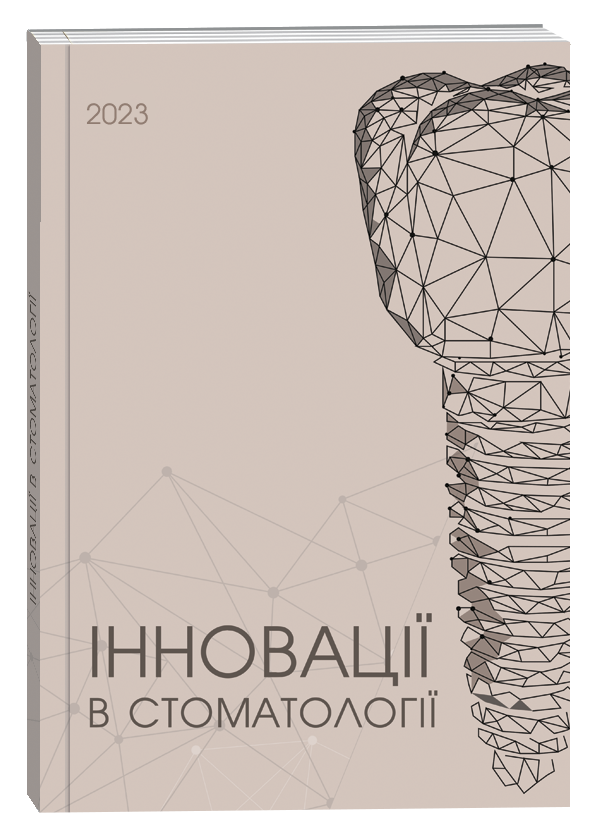MORPHOLOGICAL VERIFICATION OF PERIODONTAL TISSUE DESTRUCTION PROCESSES AND THEIR REGENERATION AFTER METABOLIC CORRECTION IN EXPERIMENTAL PERIODONTITIS
DOI:
https://doi.org/10.35220/2523-420X/2025.1.9Keywords:
experiment, periodontitis model, metabolic correction, gingival epithelium, connective tissue, alveolar boneAbstract
Conducting a comparative analysis of the morphological features of normal, damaged, and regenerating periodontal tissues – particularly at the ultrastructural level – is extremely relevant and requires appropriate anatomical substantiation, as it plays an important role in the development and improvement of diagnostic methods and the choice of rational pharmacotherapeutic approaches. Aim of the study. To investigate the morphological signs of damage and the features of recovery of the periodontal complex of the rat mandible using a metabolic model of periodontitis. Materials and methods. This study used 80 mature male Wistar rats, which were divided into five groups (16 animals in each): two control groups – IC (negative control) and IIC (conditional positive control) – and three experimental groups: ID, IID, and IIID. The experiment was conducted in two stages. In the first stage, rats in the IIC and experimental groups received a 0.04 % aqueous solution of ammonium chloride (400 mg/kg) per os daily – an acidotic model of periodontitis – separately from the main feed, while the IC group received an isotonic saline solution (400 mg/kg) per os. In the second stage, rats in both control groups were administered isotonic saline solution (400 mg/kg),group ID received an intramuscular injection of 5 % meldonium dihydrate solution (a metabolic agent), group IID received calcium glycerophosphate per os (133 mg/kg), and group IIID received both 5 % meldonium dihydrate solution intramuscularly and calcium glycerophosphate per os simultaneously. At the end of the experiment, blocks of the mandible with teeth were collected, and the tissues were fixed for 48 hours in 10 % neutral formalin solution. Paraffin sections (5–7 µm thick) were stained with hematoxylin and eosin according to van Gieson.Deparaffinized sections were treated with aniline alcohol and then stained using M. Heidenhain’s “azan” technique.Selected areas of the specimens were photographed using a Leica DFC 420 digital camera mounted on a microscope.A comparative histological examination of fragments of the alveolar processes of the mandible, stained with hematoxylin and eosin and with azan by M. Heidenhain, was carried out. Results. In the acidotic model of periodontitis (28 days) in rats of the IIC group, unlike in the IC group, the interdental papillae were hyperemic, edematous, and acquired a smooth, dome-like shape.Due to enhanced desquamation of the cells of the horny and granular layers of the epithelium, the gingival epithelial layer remained only partially; eroded areas were covered with granulation tissue. The intercellular spaces of the polymorphic cells of the spinous and basal layers were also enlarged, and in certain areas there was a lack of contact between cells. Endothelial swelling was observed in the gingival capillaries. Resorption of collagen fibers and the alveolar bone tissue of the rat mandible occurred, and leukocyte infiltrates were present – key indicators of inflammatory-dystrophic lesions. As a result of metabolic correction on the 42nd day of the experiment, there was incomplete regeneration of the gingival epithelium and complete remodeling of the bone tissue in the alveolar part of the mandible in rats. This was accompanied by the tightening of intercellular contacts and the basal membrane of the gingival epithelium, the emergence of newly formed thin-walled vessels, and the appearance of areas of replacement sclerosis in the subepithelial connective tissue. Conclusions.The conducted research has established that the application of the proposed therapeutic complex helps to normalize the processes of gingival epithelium and alveolar bone tissue regeneration in the mandibles of rats on a metabolic model of periodontitis. The results obtained in this study can be used for the development and analysis of effective treatment methods for inflammatory periodontal diseases in patients with metabolic disorders.
References
Пиндус В., Дєньга О., Пиндус Т., Почтар В., Шнайдер, С., Рачинський, С. Спектроколориметрична оцінка впливу лікувально-профілактичних заходів на ступінь запалення ясен пацієнтів із різним ступенем ураженням тканин пародонту. Вісник стоматології. 2024. № 3(128). С. 50–55.
Babay O. M., Merkulova Yu. V., Deieva T. V. Comparative clinical and morphological analysis of the periodontitis of different genesis. Experimental and clinical medicine. 2015. № 2(67). С. 60–63.
Baheti M., Durge Kh., Bajaj P., Kale Bh., Shirbhate U. Role of Animal Models in Periodontal Clinical Research and its Present-Day. Journal of Clinical and Diagnostic Research. 2023. Vol. 17(3). Р. 19–22.
Кордіяк О. Й, Мороз К. А., Гонта З. М., Немеш О. М., Шилівський І. В. Мінеральний склад кісткової тканини нижньої щелепи при змодельованому пародонтиті на тлі метаболічного ацидозу: результати експериментальних досліджень. Актуальні проблеми сучасної медицини: Вісник Української медичної стоматологічної академії. 2024. № 1(24). С. 94–99.
Демкович А. Є., Бондаренко Ю. І. Патогенетичні основи моделювання пародонтиту у тварин. Здобутки клінічної і експериментальної медицини. 2015. № 1(22).
Monea A., Mezei T., Monea M. The influence of diabetes mellitus on periodontal tissues: a histoloical study. Romanian Journal of Morphology and Embryology. 2012. Vol. 53, № 3. P. 491–495.
Бурда Х., Скалат А., Гонта З., Немеш О., Шилів- ський І. Цитоморфологічна оцінка ефективності лікування генералізованого пародонтиту в хворих із виразковою хворобою дванадцятипалої кишки. Вісник стоматології. 2022. № 2(119). С. 14–20.
Висоцький В. Я. Експериментальні моделі пародонтиту: можливості, переваги і недоліки. Перспективи та інновації науки. 2024. № 8(42). С. 1013–1023.
Chitipothu M. D., Chowdary D. S. Animal Models of Relevance to Dentistry. Open Access Library Journal. 2022. Vol. 9 No. 5, May 19.
Гонта З. М., Шилівський І. В., Немеш O. M., Слаба O. M, Кордіяк O.Й. Сучасні патогенетичні концепції розвитку генералізованого пародонтиту. Огляд літератури. Імплантологія Пародонтологія Остеологія. 2021. Вип. 2–3(62). С. 50–55.
Struillou X., Boutigny H., Soueidan A., Layrolle P. Experimental animal models in periodontology. The Open Dentistry Journal. 2010. Vol. 29. P. 37–47.
Toker H., Ozdemir H., Eren K. [et al.] N-acetylcysteine, a thiol antioxidant, decreases alveolar bone loss in experimental periodontitis in rats. J Periodontal. 2009. Vol. 80. P. 672–678.
Шнайдер С. А. Морфогенез експериментального хронічного пародонтиту. Морфологія. 2011. Т. 5, № 1. С. 38–41.
Goriuc A., Cojocaru K. A., Luchian I., Ursu R. G., Butnaru O., Foia L. Using 8-Hydroxy-2’-Deoxiguanosine (8-OHdG) as a Reliable Biomarker for Assessing Periodontal Disease Associated with Diabetes. Int J Mol Sci. 2024. 24. Vol. 25(3). P. 1425.
Wu M., Chen S.W., Jiang S.Y. Relationship between gingival inflammation and pregnancy. Mediators Inflamm. 2015. Vol. 23. P. 623427.
Годованець О. І. Структурні зміни тканин пародонта щурів за умов хронічної нітратної інтоксикації. Клінічна та експериментальна патологія. 2008. Т. 7, № 1. С. 30–33.
European convention for the protection of vertebrale animals used for experimental and other scientific purposes. – Strasburg.Council of Europe, 1986;123:51.7.
Наказ України «Про затвердження Порядку проведення науковими установами дослідів, експериментів на тваринах». Міністерство освіти і науки України. 2012. № 249.








